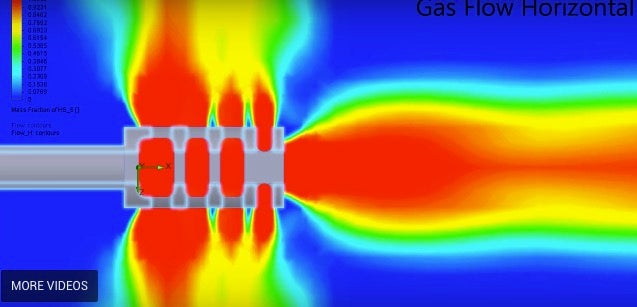Today I stumbled across a handful of the most underrated videos on YouTube. Published in 2013, the video below (and five others like it) showcase a CAD simulation of the volume of escaping gasses, and the amount of force enacted on the individual baffles, on a muzzle brake in ten-thousandths of a second.
We all know engineering simulations like these exist in the world, but proprietary data is secretive and good engineers (especially firearms designers) are hard to come by. YouTube user mpep556 has provided us with a rare glimpse into the world of advanced firearms design.
The numbers are interesting to say the least. Baffle 1, naturally, is carrying most of the load but I am surprised to see that subsequent baffles carry very little by comparison. I’m also surprised at the 0:39s mark when we see a dip in force immediately after -or during- the initial spike. My first hypothesis was that the dip is the relief on the baffle as the bullet passes through, but the math doesn’t add up. A “.38 Super” indicated by the title screen should have approx. 1,050 fps at the muzzle, and should pass through at approx. 0.004 thousandths of a second assuming a 5″ barrel like the one shown below. I consulted the help of a Senior Military Aerospace Fluid Conveyance Technician (yes, really) and he informed me that this means everything before 0.004 would be compressed air being forced down the bore by the advancing bullet. So that doesn’t seem to explain the dip, but it could explain the timing. To confuse the issue further, baffles 2 through 4 show this phenomenon at increasingly later times. Perhaps someone can enlighten us in the comments. (Please?)
My own confusion notwithstanding, I’m thrilled that mpep556 shared these videos with us. Unfortunately it appears this user is no longer publishing or is on hiatus. I like to imagine he or she is off somewhere doing great things for the industry.

Les Baer Custom Inc. 1911 Ultimate Master Combat Pistol – Compensated
 Your Privacy Choices
Your Privacy Choices
